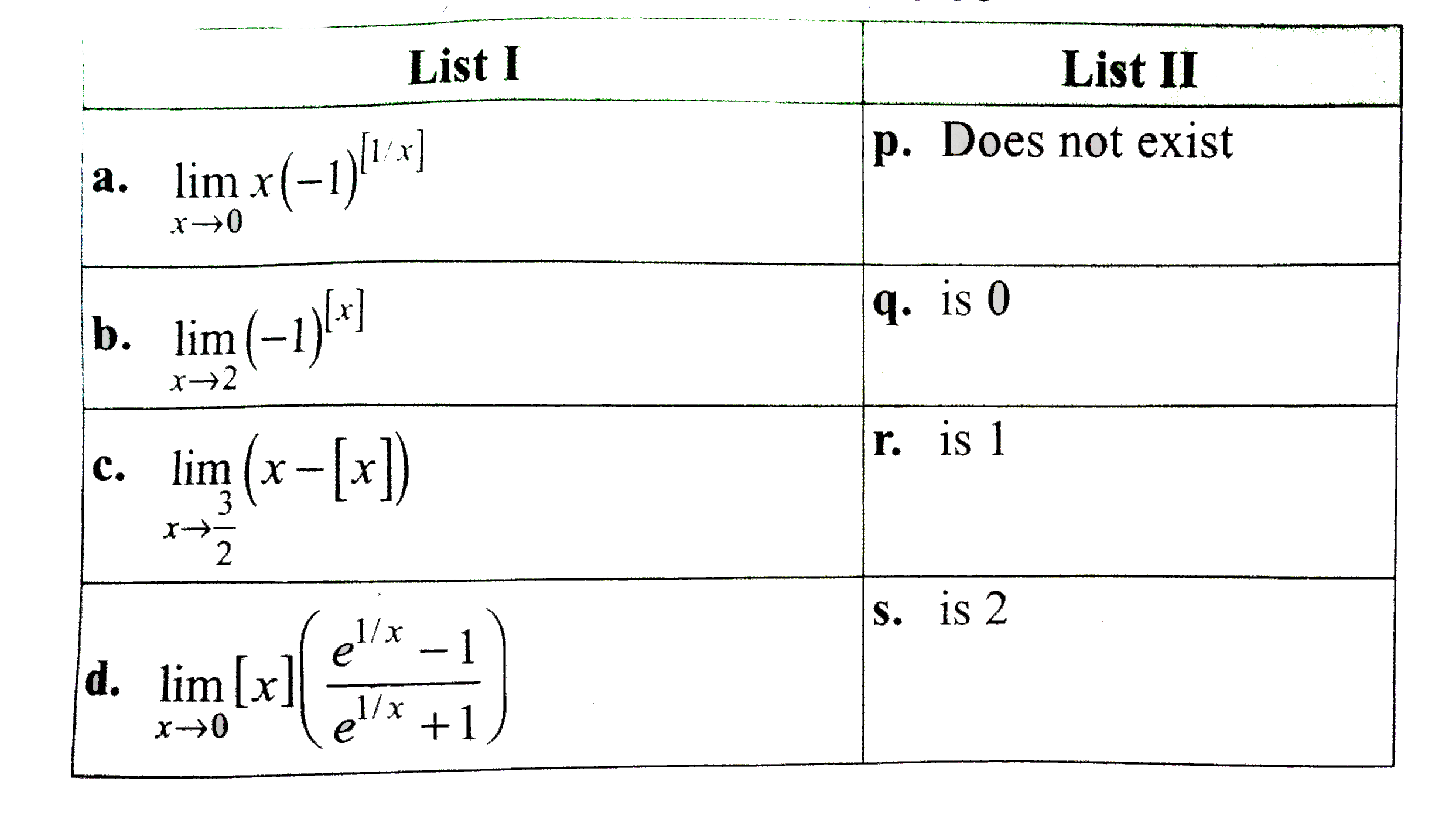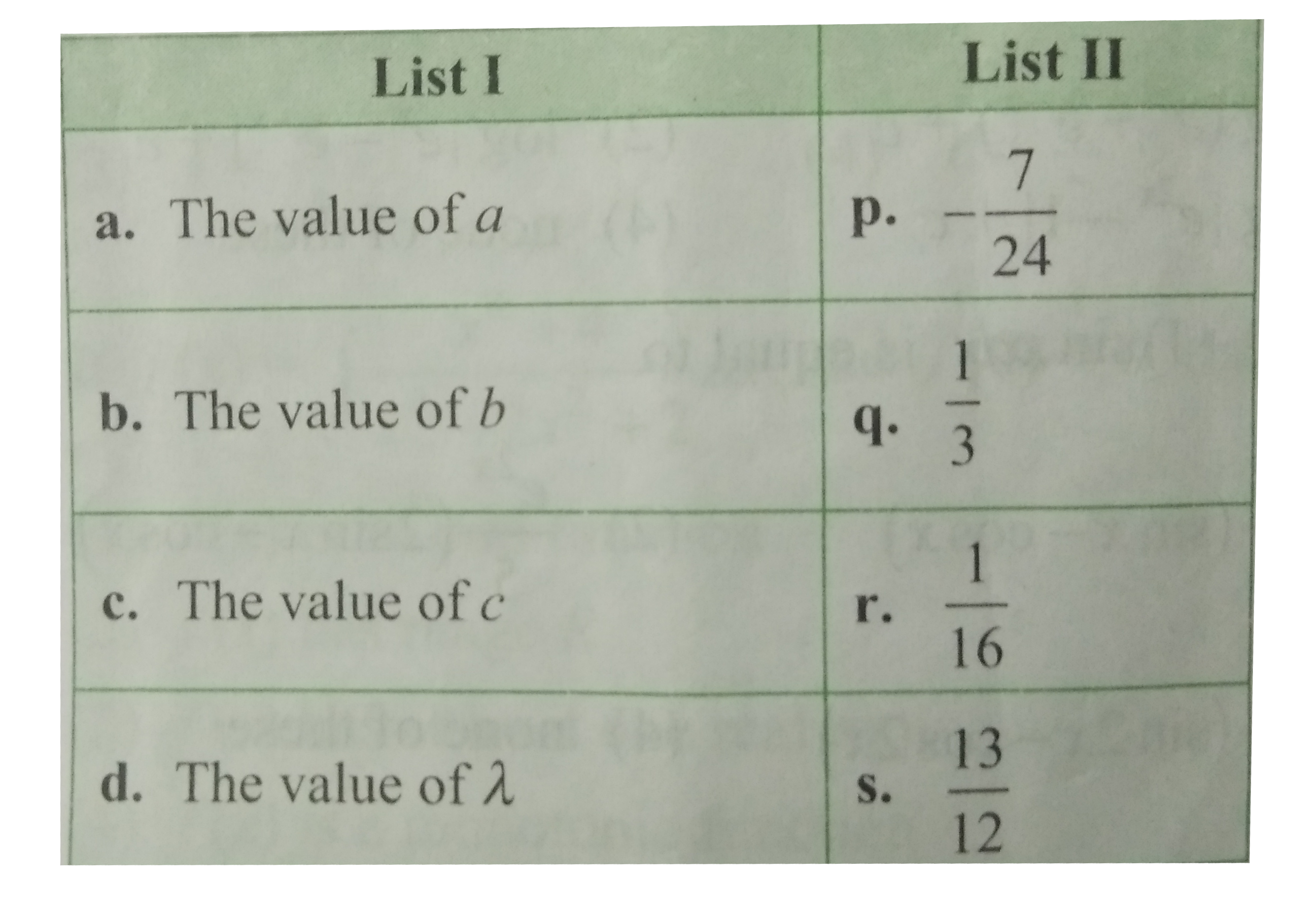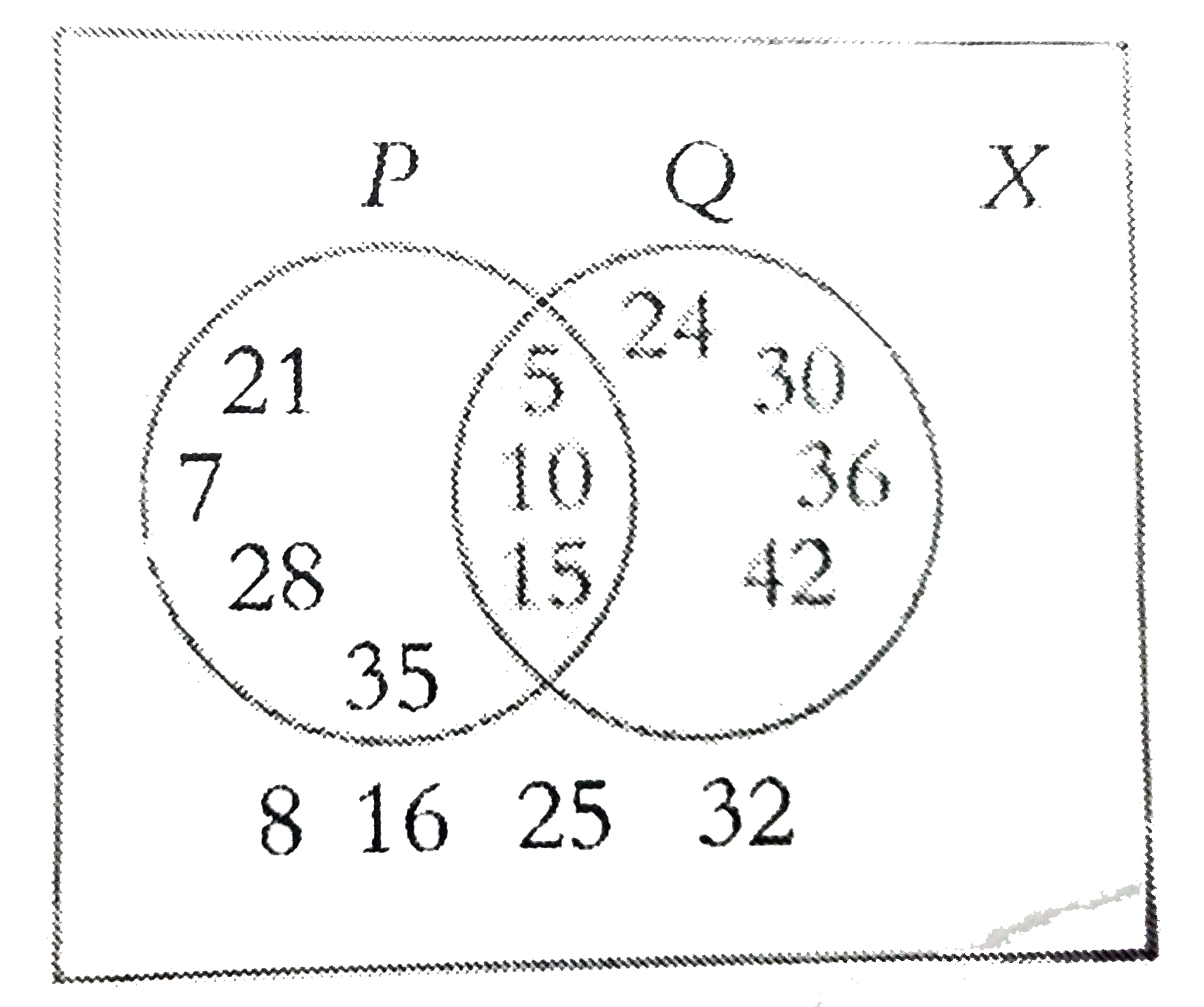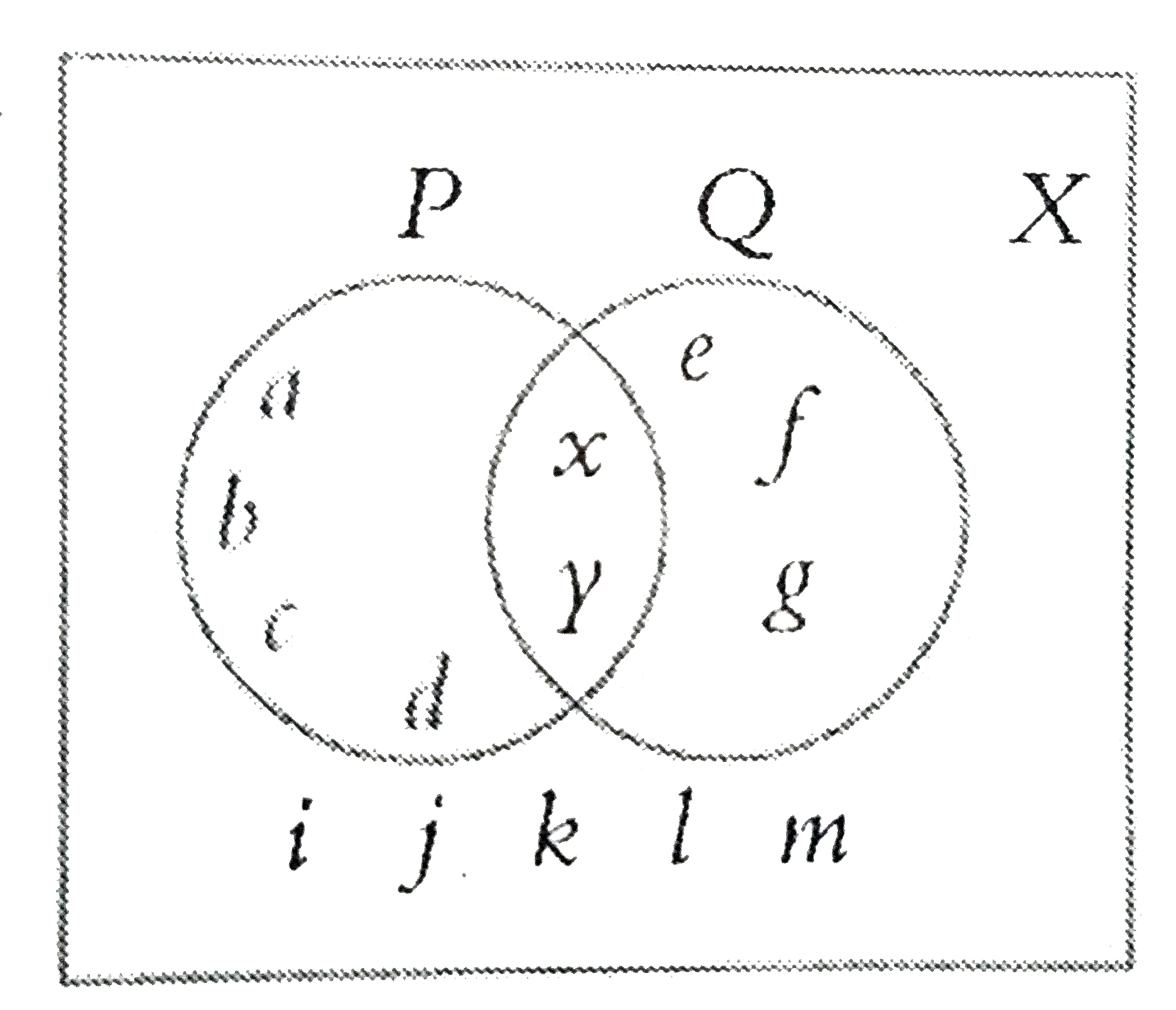Match the following lists (where [x] represents the greatest integer function) and then choose the correct code.
![Match the following lists (where [x] represents the greatest integer function) and then choose the correct code. Codes : {:(,](https://d10lpgp6xz60nq.cloudfront.net/physics_images/CEN_CAL_C02_E12_005_Q01.png)
Codes :
a b c d(1)s r q p(2)q p s p(3)s r p q(4)p p q rSolution in Tamil
The correct Answer is:(2)
a. limx→0s(−1)[1/x]
L.H.L.=limh→0(0−h)(−1)[10−h]=0
R.H.L.=limh→0(0+h)(−1)[10+h]=0
b. limx→2(−1)[x]
L.H.L.=limh→0(−1)[2−h]=(−1)1=−1
R.H.L.=limh→0(−1)[2+h]=(−1)2=1
So limit does not exist.
c.limx→32(x−[x])
L.H.L.=limh→032−h−[32−h]=limh→032−h−1=12
R.H.L.=limh→032+h−[32+h]=limh→032+h−1=12
L.H.L.=R.H.L.=12
limx→0[x](e1/x−1e1/x+1)
L.H.L.=limh→0[0−h]⎛⎜⎝1e0−h−11e0−h+1⎞⎟⎠
=limh→0[−h]⎛⎜⎝e−1h−11e0−h+1⎞⎟⎠=(−1)×(−1)=1
R.H.L.=limh→0[0+h]⎛⎝e1h−1e1h+1⎞⎠=0
Limit does not exist
Topper's Solved these Questions
- BOOK - CENGAGECHAPTER - LIMITSEXERCISE - Exercise (Numerical)23videos
LIMITS
- BOOK - CENGAGECHAPTER - LIMITSEXERCISE - JEE Main Previous Year8videos
LIMITS
- BOOK - CENGAGECHAPTER - LIMITSEXERCISE - Exercise (Comprehension)20videos
LIMITS
- BOOK - CENGAGECHAPTER - JEE 2019EXERCISE - Chapter 109videos
JEE 2019
- BOOK - CENGAGECHAPTER - LINEAR COMBINATION OF VECTORS, DEPENDENT AND INDEPENDENT VECTORSEXERCISE - DPP 1.210videos
LINEAR COMBINATION OF VECTORS, DEPENDENT AND INDEPENDENT VECTORS
Similar Questions
The reciprocal of the value of: (lim)n→∞(1−122)(1−132)(1−142)(1−1n2)is
View SolutionLet f:R→R be a positive, increasing function with
limx→∞f(3x)f(x)=1. Then limx→∞f(2x)f(x) is equal to07:47View SolutionFind the domain of f(x)=√|x|−{x} (where {⋅} denots the fractional part of x).
06:56View SolutionIf y = y(x) is the solution of the differential equation, xdydx+2y=x2 satisfying y(1) = 1, then y(12) is equal to
01:41View SolutionThe number of integral values of p for which (p+1)ˆi−3ˆj+pˆk,pˆi+(p+1)ˆj−3ˆk and −3ˆi+pˆj+(p+1)ˆk are linearly dependent vectors is q
01:50View SolutionMatch the following : Codes : {:((a),q,r,p,s),((b),r,q,p,s),((c ),q,r,s,p),((d),r,q,s,p):}
03:28View SolutionMatch the following lists (where [x] represents the greatest integer function) and then choose the correct code.

Codes :
a b c d(1)s r q p(2)q p s p(3)s r p q(4)p p q r05:52View SolutionConsider
∫x3+3x2+2x+1√x2+x+1dx
=(ax2+bx+c)√x2+x+1+λ∫dx√x2+x+1
Now, match the following lists and then choose the correct code.

Codes:
abcd(1)qpsr(2)spqr(3)rqps(4)qspr12:31View Solution
From the above Venn diagram ,find n(P-Q)+n(Q-p)=_____.06:49View Solution
From the above Venn diagram ,Find n(P−Q)+n(Q−P)01:26View SolutionMatch the coloumn

A→QB→RC→PD→SA→QB→RC→SD→PA→RB→QC→SD→PA→RB→QC→PD→S05:30View Solutionif P,q, r, s ∈ R such that pr=2(q+s) then
02:30View SolutionMatch the following lists (where [x] represents the greatest integer function) and then choose the correct code.

Codes :
a b c d(1)s r q p(2)q p s p(3)s r p q(4)p p q r02:55View SolutionConsider
∫x3+3x2+2x+1√x2+x+1dx
=(ax2+bx+c)√x2+x+1+λ∫dx√x2+x+1
Now, match the following lists and then choose the correct code.

Codes:
abcd(1)qpsr(2)spqr(3)rqps(4)qspr02:49View SolutionIn Figure, if quadrilateral PQRS circumscribes a circle, then PD+QB= (a)PQ (b) QR (c) PR (d) PS
09:23View Solution

